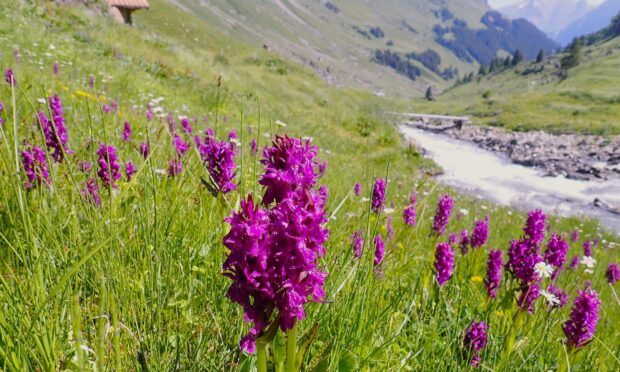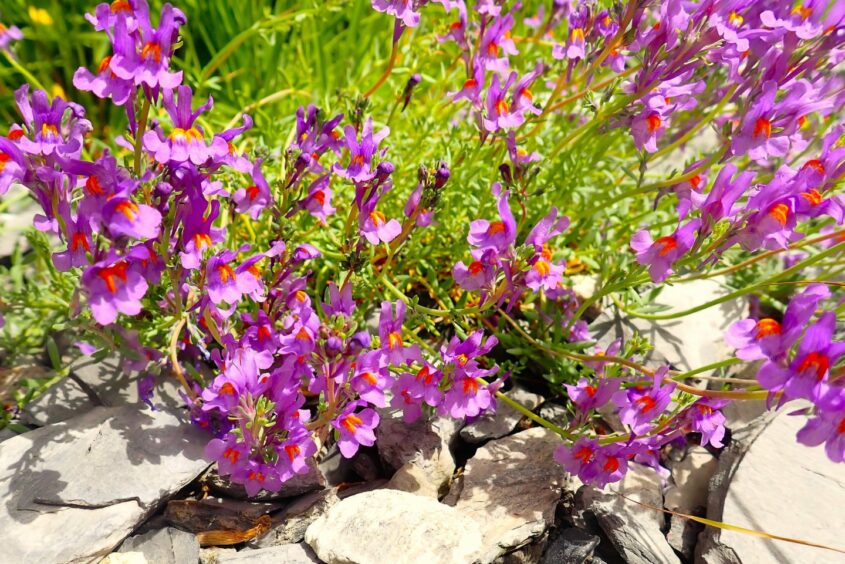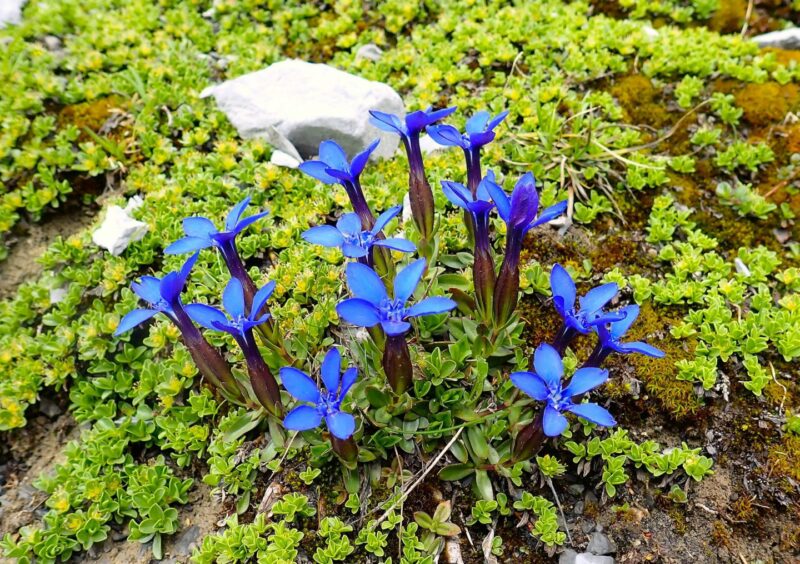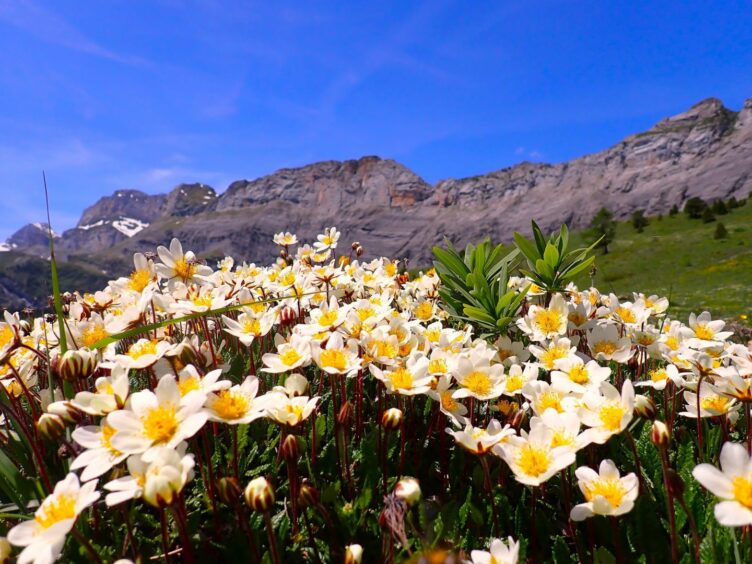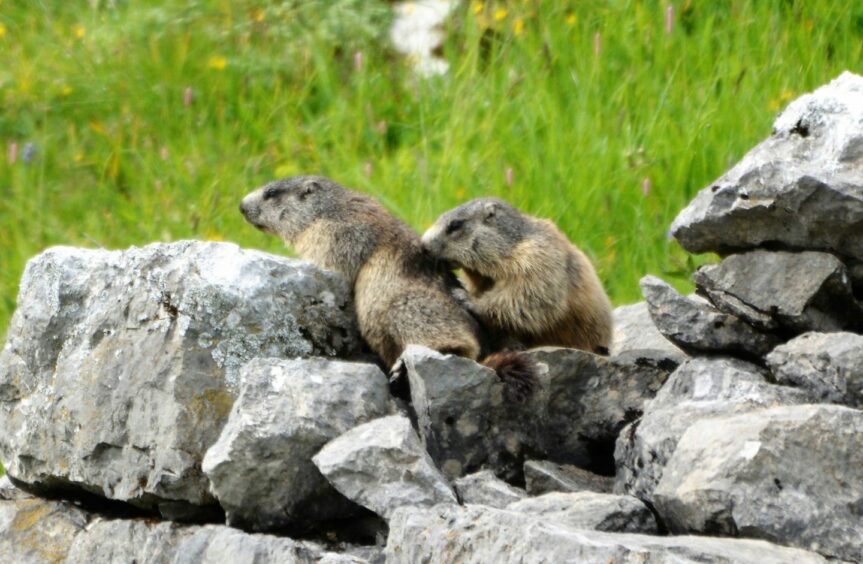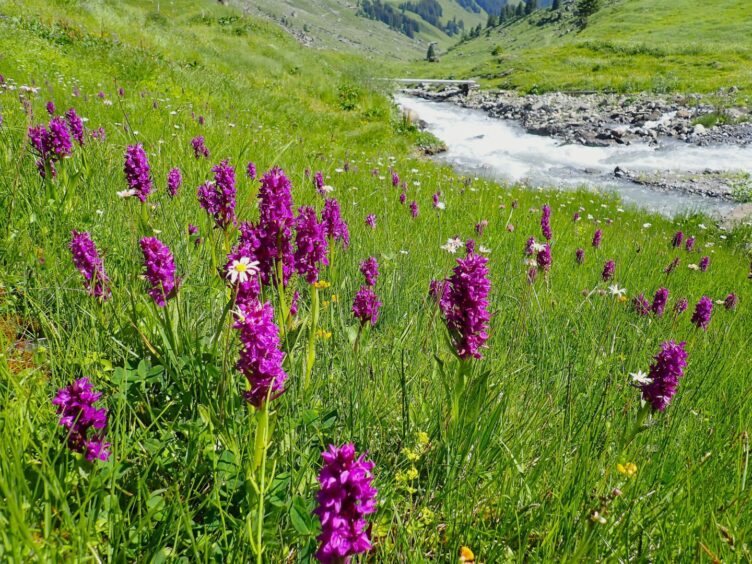The wild drift of purple blooms swept along the damp flush of this Alpine meadow like a lilac sea, my mind so smitten by their shimmering elegance that it was impossible to quell the rising elation I felt from within.
I had never seen so many marsh orchids in the one place before, and spurred by natural curiosity, I started to count them – but I soon stopped, much better to experience the joy they brought rather than engage in pointless analysis.
Nature often does that to me, a battle between mind and heart – the science of an exciting discovery and the urge to question and delve deeper quickly becoming overwhelmed by the awe of the moment.
I was on a high trail in the Alps above the small town of Kandersteg in the Bernese Oberland of Switzerland and the abundance and variety of wildflowers in the sparkling meadows was astonishing.
As well as marsh orchids, there were fragrant and early-purple orchids, along with a plethora of other flowers, including mountain avens and Alpine toadflax.
The spring gentians were especially compelling, the blue in their intricately arranged petals so deep and alluring that one became instantly drawn under their spell. I am uncertain if there is a word in the English language that adequately describes the intense shade of blue of these enchanting gentians, but cobalt would be a reasonably close match.
The Alps are richer in wildflowers than almost any other part of Europe. This is an area of climatic extremes, covered in snow and bounded by freezing temperatures for much of the year, yet in the short spring and summer this is a land of abundant sunshine and calming warmth. Above the tree line, Alpine flowers are especially showy to attract the relatively few insects that live at high altitude.
For centuries, low intensity grazing by farmers and the mowing of hay for winter animal feed created the perfect conditions for flower rich meadows. Sadly, there are many threats today, including the use of fertilisers to boost hay production. The flora of the Alps flourishes on nutrient poor soil and only in areas where the touch of humanity is light. Climate change is another threat, especially for those flowers adapted to live in the highest areas.
In addition to the wildflowers, there is much other wildlife to enthral, including marmots, ibex and chamois, as well as hordes of butterflies.
One day, I watched in wonder as a pair of rare, bearded vultures soared high above me. With a wingspan of almost 9ft, the bearded vulture population in their Alpine range was driven to extinction by the early 20th Century.
The species was unfairly maligned, considered as the ‘devil bird’ by people who wrongly believed it would steal small children and lambs.
A reintroduction programme began in the Alps in 1986, and today there are over 60 breeding pairs – a wonderful example of humanity putting right past wrongs, and ensuring nature is accoladed the mighty pedestal it so richly deserves.
